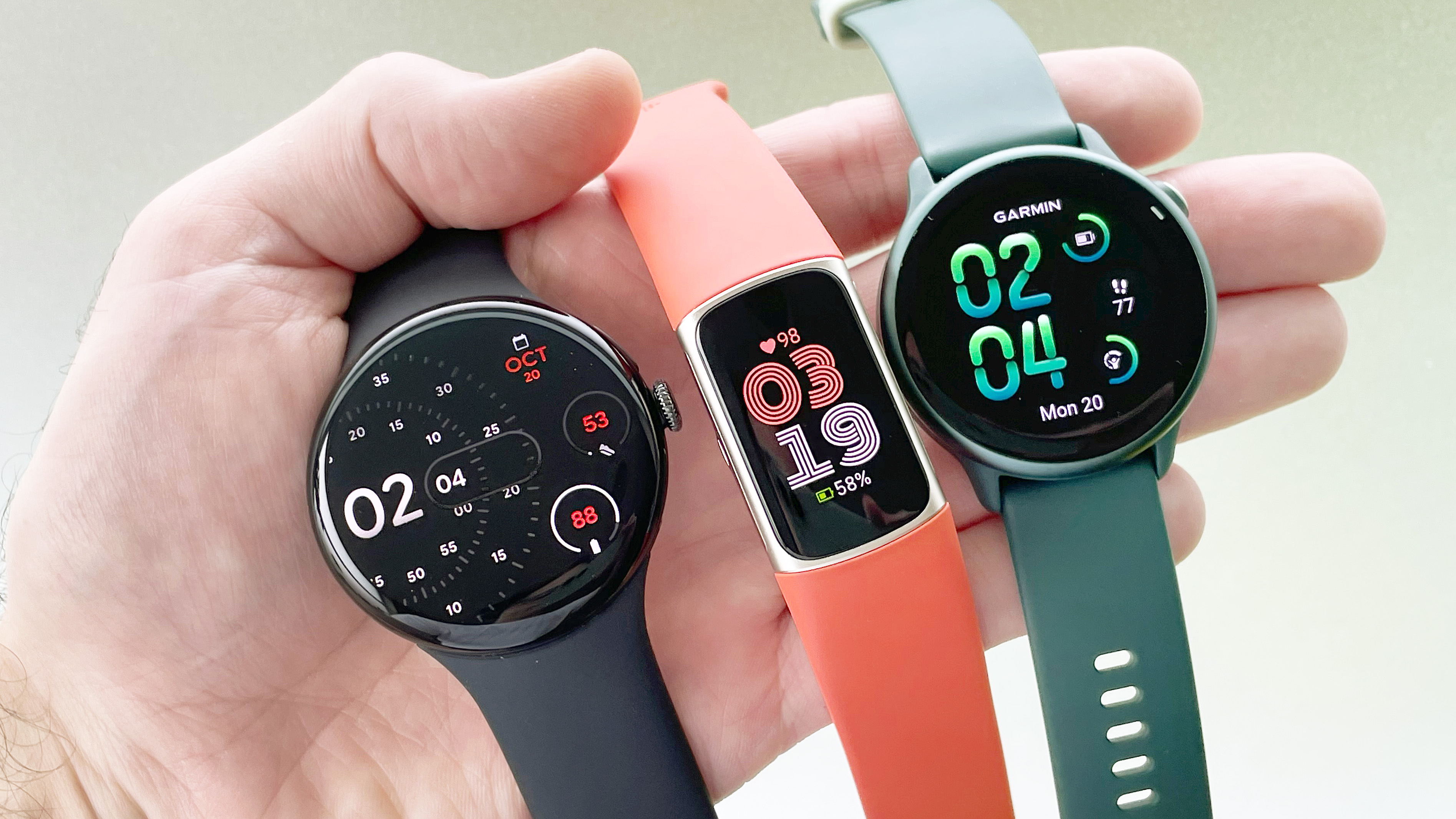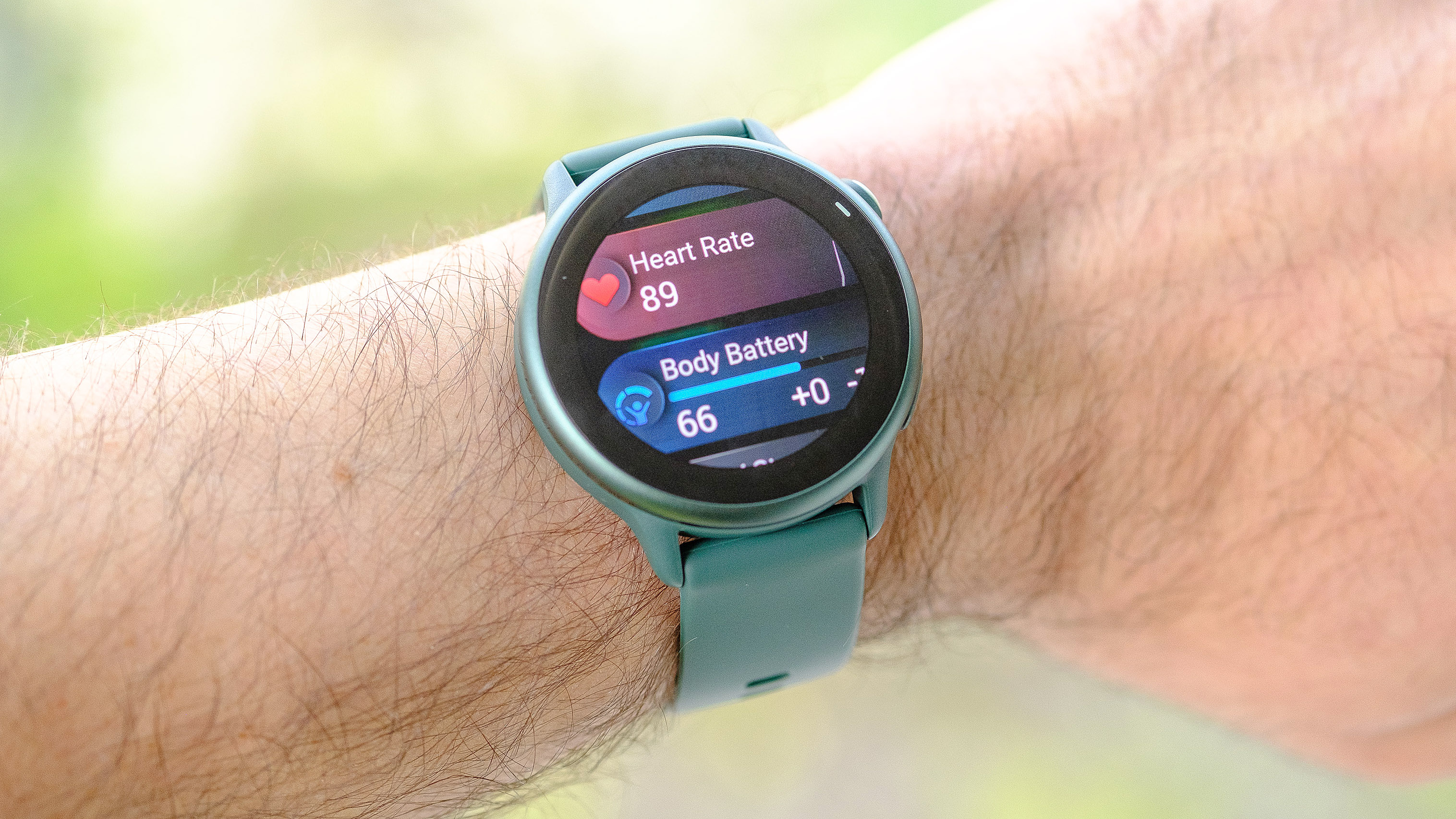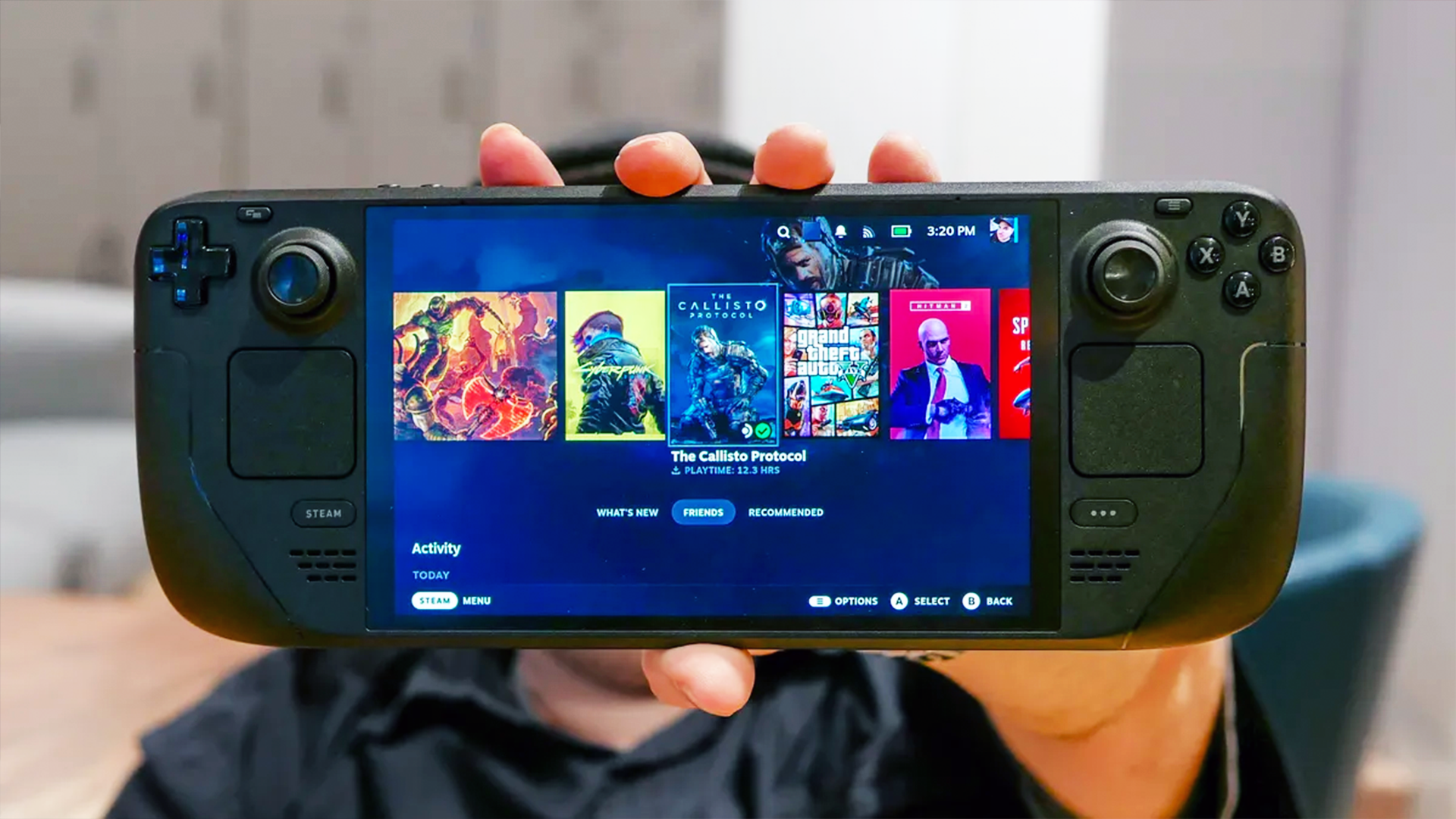The best Fitbit for tracking your health: Expert tested and rated
These are the best Fitbits and Fitbit alternatives in 2025

Here at Tom's Guide, we've been testing the best Fitbit trackers for over a decade. In that time, they've gone from minimalist step counters to fully-fledged smart devices capable of tracking complex workouts, sleep quality, physical recovery, and more.
No longer independent, Google acquired Fitbit in 2021 and has been integrating Fitbit tech into the brand's flagship Pixel Watch line ever since. Now fully a part of Google, only a handful of Fitbit-branded models remain, notably the Fitbit Charge 6, my pick for the best Fitbit in 2025.
With Google ending production of the Fitbit Sense and Versa smartwatch lines, my top Fitbit smartwatch picks aren't Fitbits at all, but the Google Pixel Watch 4 and Garmin Vivoactive 6.
For the cost-conscious, the Amazfit Band 7 is a near-perfect, modern-day replacement for the 2022 Fitbit Inspire 3, which is technically still a current model, but rather long in the tooth. Read on to find out my other picks, further details on these top choices, spec comparisons, and more.

I’m Dan Bracaglia, a Tom’s Guide Senior Writer focused on all things wearable technology, including fitness trackers and smartwatches. In addition to looking after our best Fitbit guide, I also keep our best fitness tracker guide up to date. How? I test every model I can get my hands on. Moreover, as a journalist obsessed with outdoor workouts/adventures — whether it’s hiking, biking, jogging, snowboarding, kayaking or swimming — as well as the geeky, technical side of modern gadgets, helping you choose the best darn fitness tracker for the money is nothing short of my passion. Need more help in deciding? Contact me via email, linked at the bottom of the page.
The best Fitbit fitness trackers you can buy today
Why you can trust Tom's Guide
Best Fitbit


Specifications
Reasons to buy
Reasons to avoid
The Fitbit Charge 6 is our gold-standard fitness tracker, bundling all the activity, health and sleep monitoring features you'd expect alongside a small selection of smartwatch-style additions, like support for Google Maps, YouTube Music, and Google Wallet. Sadly, Google recently killed Fitbit support for Google Voice Assistant (but Amazon subscribers can still access Alexa).
The Fitbit Charge 6 is one of the few in the brand's range that retains the classic tracker design. Though it's not as slimline as the Fitbit Inspire 3, it does have a bright, full-color AMOLED display that's easy to read even in direct sunlight. However, neither the screen nor the device is particularly large (larger-fingered buyers beware).
An onboard GPS allows you to leave your phone behind when taking part in outdoor workouts without losing location, pace, and other crucial data. However, the Charge 6 does not record elevation data. Across the board, from heart rate to stress monitoring, the onboard holistic tools proved accurate in our testing. The same is true of fitness tracking: The Charge 6 beat the far pricier Garmin Forerunner 165 in my head-to-head accuracy test.
Losing roughly 15% battery charge per day with moderate use (including tracking runs with the built-in GPS), the Charge 6 meets its week-long advertised rate, but if you keep the always-on display active, it declines faster.
Easy wearability, a reasonable price, comprehensive fitness and holistic tracking tools, solid battery life, and just the right amount of smart features make the Fitbit Charge 6 the best Fitbit for most people in 2025. However, if you're after a more smartwatch-esque design or just more smart features, it's worth considering the Google Pixel Watch 4 instead.
- Read our full Fitbit Charge 6 review
Best Fitbit smartwatch


Specifications
Reasons to buy
Reasons to avoid
The best Fitbit smartwatch isn't even really a Fitbit. The Google Pixel Watch 4 combines the design and features of Google's flagship smartwatch range with Fitbit's time-tested fitness tracking tools to create the best Fitbit smartwatch... for Android users, that is. Fitbit devices, like the Charge 6, are so popular because you can use them with either an iPhone or an Android device. The same is not true for the Pixel Watch line.
Larger and less discreet than a traditional fitness tracker, but with a much brighter and easier-to-read display, the Pixel Watch 4 comes in two sizes (41mm and 45mm) and with optional cellular connectivity. Like the Fitbit Charge 6, the Pixel Watch 4 has GPS for location tracking. Unlike the Charge 6, it also has an onboard altimeter for elevation tracking.
Workout recovery and training tools are fairly similar between the two Google-produced wearables. The Pixel Watch 4, however, is an arguably more accurate tracker, thanks to Google's latest holistic hardware.
The Pixel Watch 4 also offers more safety tools than the Charge 6, including Loss of Pulse Detection and SOS satellite messaging (only on the cellular Pixel Watch 4 models). For smart features, there's no comparing; the Pixel Watch 4 is the best all-around smartwatch for Android you can buy today.
Despite the larger size, the Pixel Watch 4 can't match the best Fitbit's battery life of nearly a week. The larger 45mm model is good for up to 60 hours, and the 41mm model is rated for 30 hours or more per charge.
Tempted by the Pixel Watch 4 but looking to save some cash? With largely incremental health and fitness improvements over its predecessor, the Pixel Watch 3 may be a better bet.
- Read our full Google Pixel Watch 4 review
Best Fitbit alternative


Specifications
Reasons to buy
Reasons to avoid
The Garmin Vivoactive 6 checks all the boxes if you're after the best Fitbit alternative. It offers reliable tracking, a long-lasting battery, and compatibility with both Android and iOS devices. It also tracks 80 workout types and boasts many of Garmin's most useful fitness metrics, like Body Battery (similar to Fitbit's Readiness Score), comprehensive sleep-tracking analysis, and loads of useful training features.
Lightweight and easy-wearing, a responsive and reasonably-sized AMOLED screen adorns the front and is paired with two physical buttons. Like the Fitbit Sense and Versa 4, the Vivoactive 6 has a smattering of handy smart features, including NFC for mobile payments, onboard storage for music, and mirrored smartphone notifications.
There's also onboard GPS for location tracking data, allowing you to leave your smartphone at home, but no altimeter for precise elevation data. Also, while this is one of the more smartwatch-looking devices in the guide, the Vivoactive 6 doesn't come close to offering the selection of third-party apps and communication features as the Pixel Watch 4 or Apple Watch SE 3.
Safety tools are plentiful and include incident detection, which can be set to automatically call for help in the event of a fall or crash. The Vivoactive 6 additionally supports Garmin's LiveTrack feature, which lets you share a real-time location map via a link with trusted loved ones (a paired smartphone with cellular is required).
- Read our full Garmin Vivoactive 6 review
Best Fitbit for iPhone


Specifications
Reasons to buy
Reasons to avoid
The Apple Watch SE 3 is the best Fitbit alternative for iPhone users, assuming you prefer something more smartwatch-like to something more tracker-esque. Pricier and bulkier than our best Fitbit pick, the SE 3 is just as competent a fitness tracker as the Fitbit Charge 6, while offering way more smart and connectivity features.
The tradeoff is battery life. While the Charge 6 is good for roughly a week per charge, the Apple Watch SE 3 barely makes it through a single day. That said, an onboard altimeter provides elevation tracking data, something you won't get from the Charge 6.
The SE 3 comes in 40mm or 44mm with a reasonably bright and responsive touchscreen paired with two physical controls, making it a pleasure to navigate. You also get more safety features from the SE 3 than you'll find on the Charge 6, including fall and crash detection.
Finally, the Apple Watch SE 3 offers similar holistic and sleep tracking insights to the best Fitbit. However, unlike the Charge 6, the SE 3 additionally supports FDA-approved sleep apnea alerts.
- Read our Apple Watch SE 3 review
Best cheap Fitbit


Specifications
Reasons to buy
Reasons to avoid
Amazfit has carved out a niche in the affordable wearables category, and the sub-$50 Amazfit Band 7 is easily the best cheap Fitbit alternative in 2025 thanks to its delightfully high-quality design, support for an enormous range of physical activities, outstanding battery life and compatibility with both Android and iOS smartphones.
Heck, the Band 7 even boasts impressive sleep-tracking insights, mind you, they're not as detailed as Garmin's or Google's. It also sports an onboard blood oxygen sensor and has alerts for abnormally high/low heart rates, along with some handy stress-tracking tools.
Battery life is good for a whopping 28 days (seemingly enough to survive a zombie apocalypse), the best of any device in this roundup.
However, similar to the Fitbit Inspire 3, there's no onboard GPS, which means you'll need to carry your paired smartphone when working out for location and pace data. Smart features are also limited (though it does offer voice support for Amazon Alexa).
Is the Amazfit Band 7 as accurate at fitness tracking as the slightly pricier Fitbit Inspire 3 or Charge 6? Probably not. Still, for a device priced less than a night out on the town, it's got a lot going for it.
- Read our full Amazfit Band 7 review
Also consider
The Amazfit Active 2 is a wallet-friendly fitness-centric smartwatch with a slim and comfortable case design, long-lasting battery, support for over 160 workout types, impressive sleep and wellness monitoring tools, and the ability to download and save offline navigational maps. Available in two versions, the standard edition is just $99.
Read our full Amazfit Active 2 review
The Fitbit Inspire 3 retains all the classic Fitbit features, like sleep tracking, activity logging, and heart rate monitoring. Impressively, it can last 10 days between charges, even with its bright color display. Plus, you can purchase the additional Clip if you want to remove the straps and attach it to your clothing.
Read our full Fitbit Inspire 3 review
If you'd prefer a screen-less fitness tracker without subscription fees, the $99 Amazfit Helio Strap might be the ticket. It keeps tabs on sleep and physical activity with a battery that lasts up to 12 days per charge.
Read our full Amazfit Helio Strap review
Features compared
| Header Cell - Column 0 | Fitbit Charge 6 | Pixel Watch 4 | Garmin | Apple Watch SE 3 | Amazfit Band 7 |
|---|---|---|---|---|---|
Price | $159 | $349 | $299 | $249 | $49 |
Screen size and type | 1.04-inch AMOLED | 1.27-inch (41mm), 1.46-inch (45mm) AMOLED | 1.2-inch AMOLED | 1.57-inch (40mm), 1.78-inch (44mm) OLED | 1.5-inch AMOLED |
Weight | 30 g | 31 g (41mm), 37 g (45mm) | 23 g | 26 g (40mm), 33 g (44mm) | 28 g |
Battery life | 7 days, 5 hours with GPS | 30 hours (41mm), 60 hours (45mm) | 11 days, 21 hours with GPS | 18 hours (32 hours in low-power mode) | 12 days |
Built-in GPS | Yes | Yes | Yes | Yes | No |
Touchscreen | Yes | Yes | Yes | Yes | Yes |
Mobile payment | Yes | Yes | Yes | Yes | No |
Music storage | No | Yes | Yes | Yes | No |
Swim tracking | Yes | Yes | Yes | Yes | Yes |
Compatibility | Android, iOS | Android | Android, iOS | iOS | Android, iOS |
How we test the best Fitbits
We've been testing Fitbits for over a decade, starting with the diminutive Fitbit Flex back in 2014. As the years have passed, the brand's wearables transitioned from basic (but convenient) step counters to smartwatch-esque devices.
So the way we tested the best Fitbits has changed over the years, too. It was once enough to strap them to our wrists, check they were comfortable, and see how accurate the pedometer was.
These are still some of the most important areas we look at, but now we wear them overnight to experiment with the sleep tracking features and check that they don't break when exposed to some sweat, rain or other moisture.
A crucial factor is the battery life, looking at how each device compares to Google's quoted battery specs. This is also a factor in how we rank and compare Fitbit devices. But so are the fitness features.
We try the automatic workout-tracking, manually start sessions, and take the devices outdoors to see how the GPS performs. We often compare the results against other Fitbit devices, and, in some cases, the best smartwatches.
FAQs
Is it still worth buying a Fitbit?
Google acquired Fitbit in 2021 and has made some substantial changes to the lineup and experience. The app was redesigned, challenges were removed, you now need a Google login to sign into the app, and the Fitbit web dashboard is no more.
The search giant also removed features from the Versa 4 and Sense 2 watches, making them exclusive to Google Pixel Watch models instead. Then, in 2024, the company released the Pixel Watch 3, "powered by Fitbit."
More recently, Google ended support for Google Voice Assistant on the Versa and Sense lines.
From what we've seen so far, Google views Fitbit as a software service more than a hardware brand. Over the next few years, it's likely that we'll see fewer Fitbit devices and more Fitbit features in Google-branded products.
So it's a complicated picture, and to some, it seems like Google is slowly killing Fitbit. But this is more of a long-term problem. Right now, you can still buy a Fitbit (or Pixel Watch) and access the brand's sleep, fitness, and health tracking features on comfortable, and (mostly) affordable devices.
When will Google release new Fitbit devices?
Outside of 2024's kid-centric Fitbit Ace LTE, Google hasn't launched a new Fitbit-branded model since 2023's Fitbit Charge 6. However, don't call Fitbit dead just yet. During an October 2025 press briefing, Fitbit’s head of product, Andy Abramson, hinted at new Fitbit hardware for 2026.
Prior to Google acquiring Fitbit in 2021, the company had settled into an annual refresh of its lineup, launching new products each fall. However, the past few years have only seen sporadic new releases.
What are some good Fitbit alternatives?
Loads of companies make Fitbit-like devices, but only a small few are as good as the namesake wearable. The best Fitbit alternatives come from big-name brands, including Garmin, Samsung, and Apple, as well as smaller manufacturers, like Amazfit.
For example, the Amazfit Band 7 and Samsung Galaxy Fit3 are both adequate alternatives to the Fitbit Inspire 3. Better yet, they're less expensive. Here's a closer look at the Inspire 3 vs. Galaxy Fit3 (note: the latter is Android only).
Prospective Fitbit Charge 6 owners may also want to check out the Garmin Vivosmart 6 for something with a similar form factor, or the Garmin Lily 2 Active if onboard GPS is a must.
The best alternative to the Fitbit Sense 2 is easily the Google Pixel Watch 4, but for iPhone users, the Apple Watch SE 3 is your best bet.
Finally, for a kid-friendly Fitbit alternative, consider grabbing a Samsung Galaxy Watch 8 and switching it into child mode (Apple offers a similar mode for its wearables).
What is Fitbit Premium?
Fitbit trackers sync data to the Fitbit app, where you can keep tabs on your activity, sleep, and heart rate. But, by default, there's not a lot of analysis or actionable insights. For that, you'll need a Fitbit Premium subscription.
Fitbit Premium costs $9.99 per month or $79.99 annually, and that gives you access to more detailed insights, especially around your sleep data. And, if you've been searching one of the best workout apps, Fitbit Premium includes video workouts and some classes.
But whether Fitbit Premium is worth it depends on your goals. If you just want to keep tabs on your daily activity, then you may not need to subscribe. But, if you're interested in learning more about how you slept and how to improve your training, it's a good option.
If you're sold on a Fitbit tracker, but you're not sure about Fitbit Premium, most of the brand's devices come with a six-month free membership for you to give the platform a spin and see if it'd be worth it for you.
Get instant access to breaking news, the hottest reviews, great deals and helpful tips.

Dan Bracaglia is the Tom’s Guide editorial lead for all things smartwatches, fitness trackers and outdoor gear. With 15 years of experience as a consumer technology journalist testing everything from Oura Rings to instant cameras, Dan is deeply passionate about helping readers save money and make informed purchasing decisions. In the past year alone, Dan has assessed major product releases from the likes of Apple, Garmin, Google, Samsung, Polar and many others.
An avid outdoor adventurer, Dan is based in the U.S. Pacific Northwest where he takes advantage of the beautiful surroundings every chance he gets. A lover of kayaking, hiking, swimming, biking, snowboarding and exploring, he also makes every effort to combine his day job with his passions. When not assessing the sleep tracking and heart rate accuracy of the latest tach gadgets, you can find him photographing Seattle’s vibrant underground music community.



